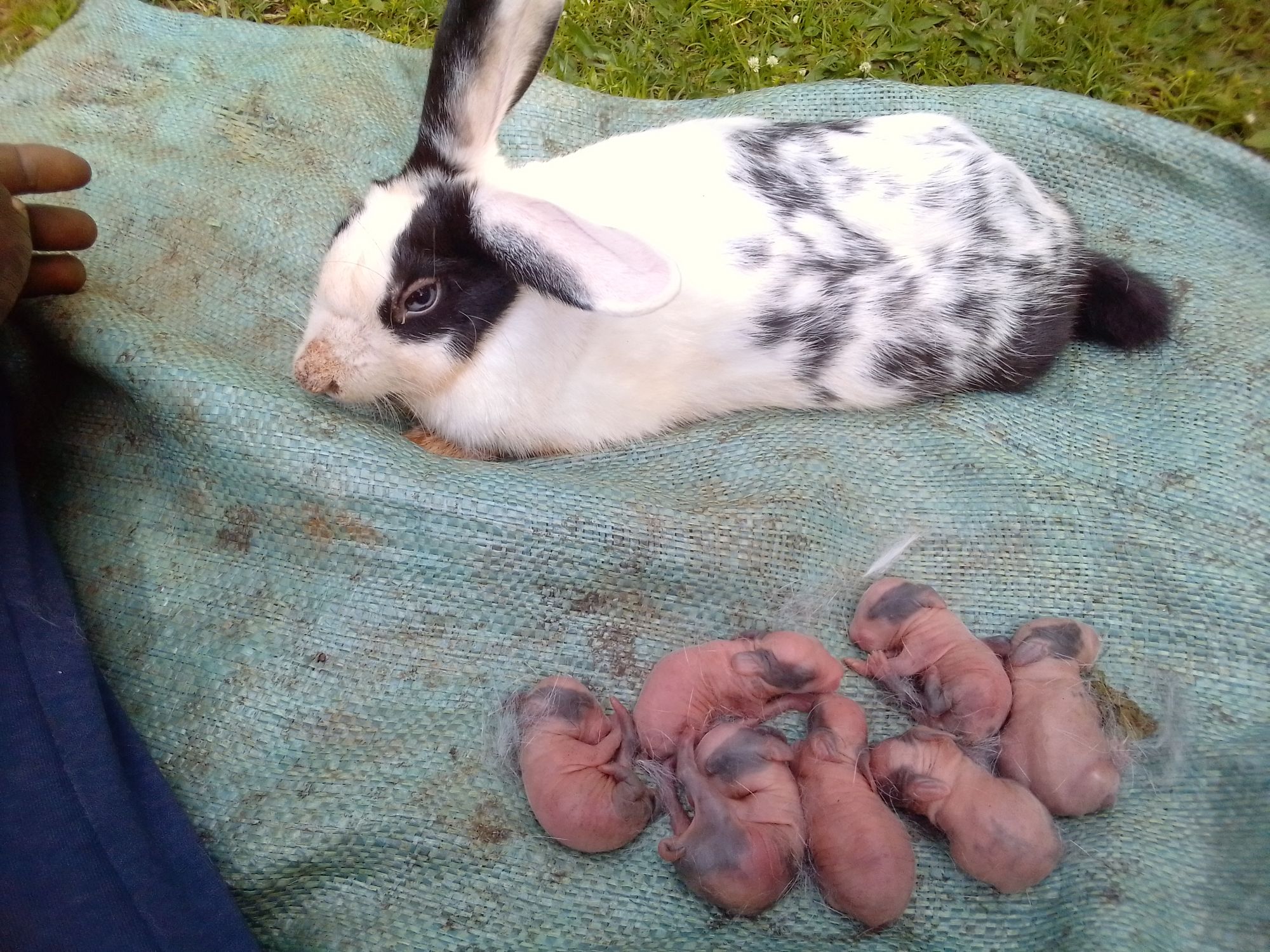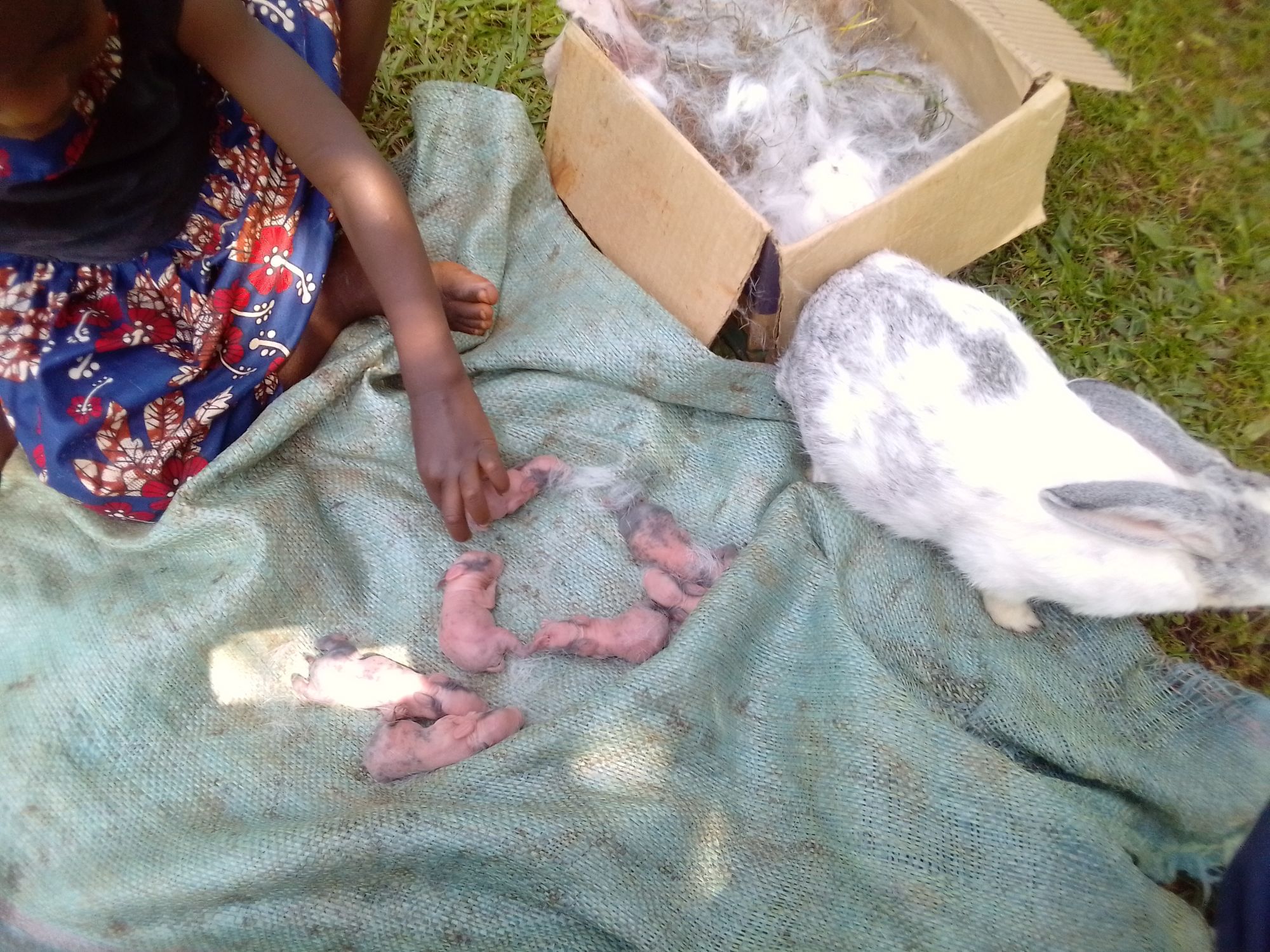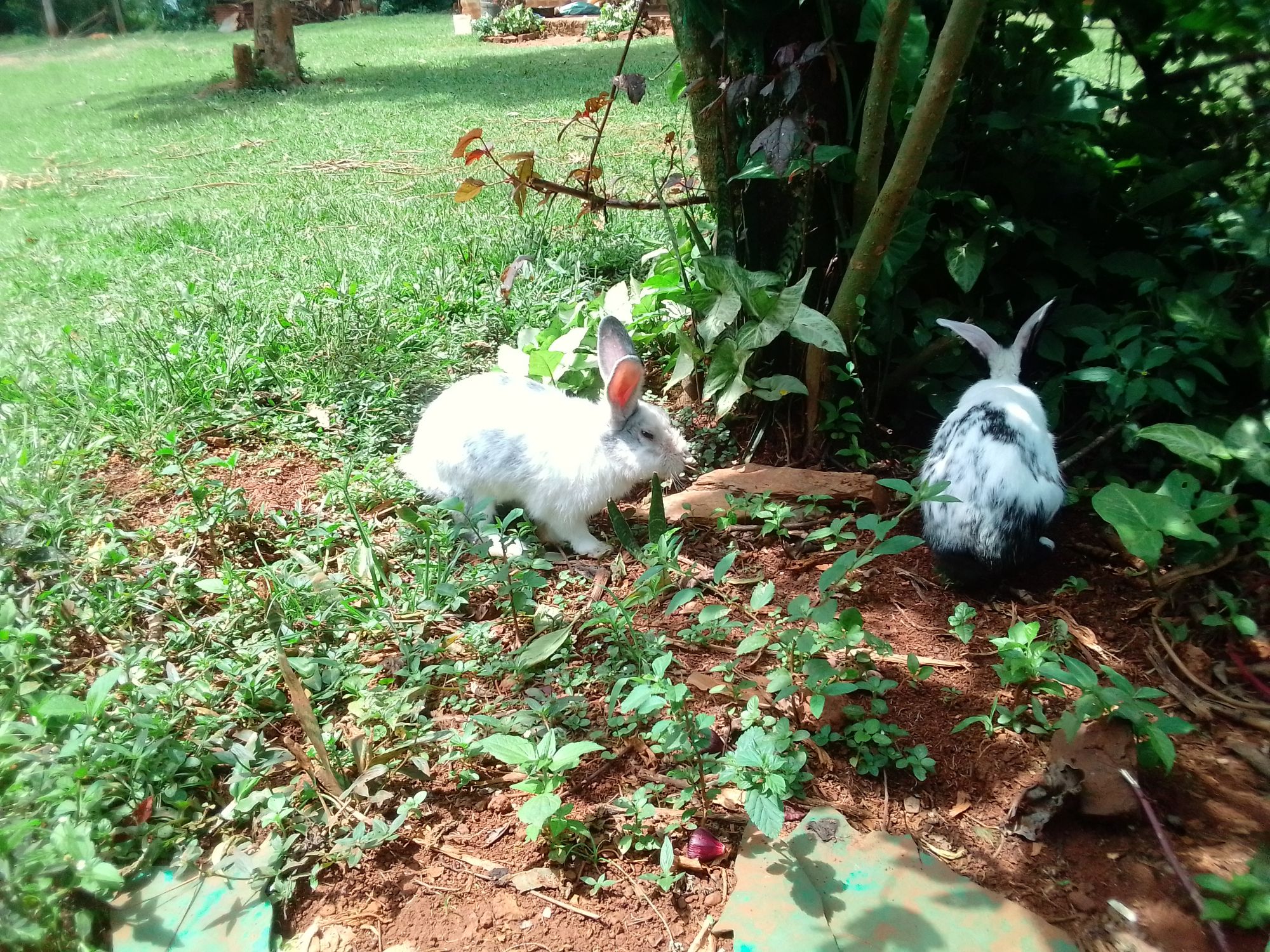
Rabbit farming is becoming popular with each passing day. More and more people, both in the rural and urban settings are getting involved in this business. Most people are keeping rabbits for its lean white meat, some as pets, and some for its manure and urine.
But even as more people are getting into this venture, very few of them have the needed knowledge on rabbits, which can prove costly especially if one is doing it as a business. Passion or interest alone is not enough if you are thinking of going into livestock farming as a business, and rabbits are no exception

I personally keep rabbits, two of which kindled down (parturition in rabbits) yesterday, fifteen kindlings (young ones of rabbits) in total, and I see the shock in people each time they find me holding down a doe to facilitate suckling. Most people are unaware that kindlings can’t suckle without aid. You have to hold down the mother so that the little ones can suckle, otherwise they will starve to death.
Yesterday while helping the kindlings suckle under the shady hass avocado tree, a friend of my mother’s saw me. Her questions on rabbits prompted me to do this post. It’s incredible how little people know of rabbits. And without proper knowledge, we are going to have very few rabbit farmers. How can you be expected to keep what you don’t understand? And even if you do venture into it without sufficient knowledge, you will end up losing your rabbits which might demoralize you into doing it in the future.
I will give you some of the most basic things you need to understand before venturing into rabbit farming. The information might come in handy when you start rearing rabbits. I will take you through the management process of rabbits from the pregnant doo to the weaning stage.

Management of rabbits from kindling to weaning:
- Rabbit Gestation Period – The gestation period in rabbits lasts for 28-33 days. At the end of that period the doe kindles or kindles down. Basically the doe carries pregnancy for a period of one month. During that period it is wise to separate the pregnant rabbit from the rest of the rabbits and have it in the maternity room which might just be a room set aside for emergencies. This particular room will give it enough room to rest with very little stress that is crucial for proper development of the foetus, as well as ensuring it’s fed well.
- Feeding the doe during pregnancy – This management practice is referred to as steaming-up. Steaming-up basically is providing extra feed of high nutritive value to an animal during the last weeks of gestation. Concentrates and plenty of high quality succulent forage should be provided. The feed is supposed to: (i) supply nutrients for good foetal growth and ensure birth of healthy kindlings. (ii) Help build up energy for parturition. (iii) Promote good health of the mother. (iv) Increase high milk yield after birth. Steaming-up is so important for instance in sheep where it can save the ewe from pregnancy toxaemia or twin lamb disease where an ewe giving birth to twins suffer from the disease after the foetus withdraw all the nutrients from the mother. Steaming-up is done two weeks to kindling.
- Kindling or Kindling down – At the end of the gestation period, a doe kindles. A doe will give birth to about 6-10 kindlings on average. The kindles are born naked and blind. A nest box with dry soft bedding should be provided to house the kindlings. You can use some of the doe’s plucked fur. This is because at that stage they’re so vulnerable since they’re both naked and blind. Signs of parturition: the doe plucks off fur from her belly and uses it to build a nest 3-10 days earlier, and it also stops feeding. So don’t get alarmed when your doe barely touches its feed around that time.
- Feeding the kindlings – After kindling down, kindlings should be allowed to suckle immediately on the colostrum from the mother. The mothers high quality milk contains 15.5% protein, 10.4% fat, 2.5% minerals and 1.9% sugar. Suckling gives the mother about 150 gm of milk per day. Orphaned kindlings should be given to a foster mother. And on feeding is where it gets complicated. Unlike hares or wild rabbits, the home rabbits can’t breastfeed the kindlings on their own, hence the need to secure the doe to allow the kindlings to suckle. Securing involves hold the doe’s hind legs, or both legs and gently pinning it down. Pick the kindlings from the nest box one at a time and place on the mother’s teats. They automatically start suckling. Do it three or four times a day. Good to note that kindlings open their eyes after 10 days, and by this time the would’ve started growing body fur as well.
- Weaning – From around three weeks the kindlings should be given wilted grass and also pellets and clean water to introduce them to feeding. Weaning is done when the kindlings are 6-8 weeks old.
- Separate housing for rabbits during weaning – A nest box we mentioned earlier for the kindlings can either be placed inside the maternity room, or housed somewhere else. But from three weeks when the kindlings are introduced to feeding, you can leave them with their mother. By this time they can suckle by themselves without human assistance and they’re strong enough to avoid being stepped on by the mother. But around weaning time, when they kindlings are fully introduced to feeds, you can move them out of their mother’s house and into a different room free from adult rabbits. Warning: no matter what you do, do not put the young rabbits into the same room with bucks as they tend to kill them, especially young males. And they’re likely to defile the females. This I’m speaking from experience. By getting the young rabbits from the mother’s room gives the doe enough freedom to recover in preparation for being mounted. This is when you do flushing: when a high plane of nutrition is given to the animal around service time.

These are some of the most important things a rabbit farmer ought to know. I hope these information will help you to better manager your rabbits in the future. For further information or any question you might have concerning the management of pregnant doe, kindlings and anything to do with rabbits, don’t shy away from reaching out.

Disclosure: This banner contains an affiliate link. I may earn a commission if you purchase through it, at no extra cost to you.
